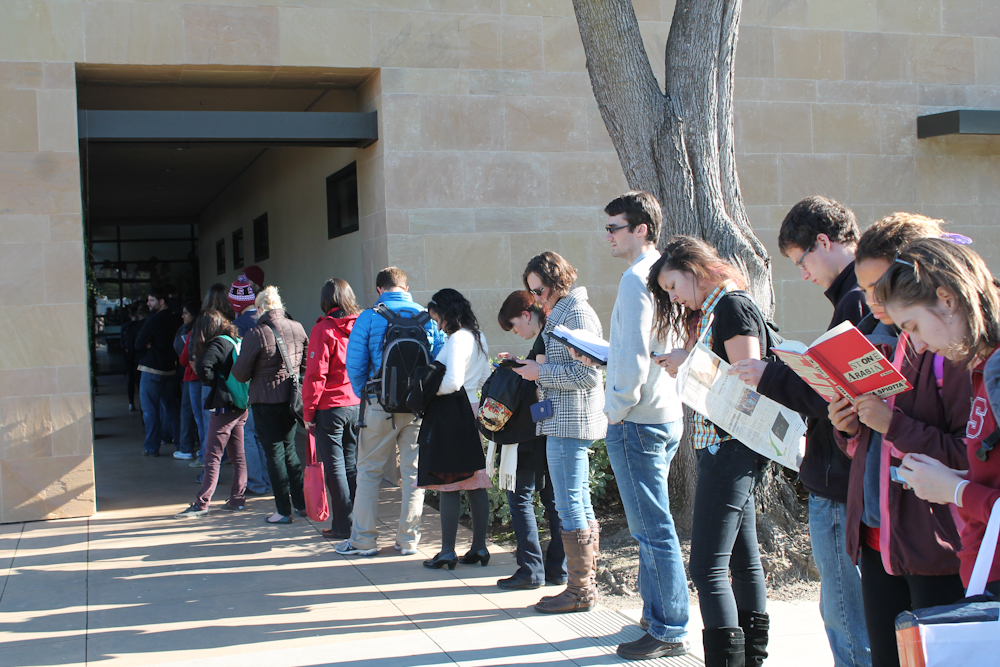Vaden Health Center has reported four times as many cases of influenza-like illness compared to this time last year, according to Vaden Medical Director Robyn Tepper. Eleven true influenza-like illnesses had been reported at this time last year, while 45 have already been reported this season.
Eighty-six viral illnesses have been reported so far this year, compared with the 45 that had been reported by the same time last year.
While Vaden does not plan on holding more emergency vaccination clinics, vaccinations are still available by appointment at Vaden and are being given through Vaden’s Travel Clinic. Students who visit Vaden for unrelated reasons are also offered the vaccine, according to Tepper.
Vaden Clinic Manager Nancy Masunaga noted the spread of influenza on campus has created a high demand for the influenza vaccine, prompting renewed efforts to make the vaccine more accessible to students.
“It was pretty stressful,” Masunaga said. “We were getting lots of phone calls from students asking to get the vaccine, and our immunization clinic was full and we couldn’t accommodate the individuals who wanted to get it by appointment. So then we thought, well, it’s time to have the drop-in.”
Vaden’s drop-in clinic was held on Jan. 16, accompanied by two drop-in clinics held by the Stanford Flu Crew in Arrillaga Family Dining Commons on Jan. 16 and 18.
In total, the Stanford Flu Crew, which partnered with Vaden for a Power Influenza Week in October, has administered 5,116 vaccinations on campus. Vaden has administered 2,749 vaccinations, including 495 given during the Jan. 16 drop-in clinic.
Although the unusually high number of visits to Vaden created an increased demand for vaccinations, Vaden did not have to turn any student away due to vaccination shortages, according to Masunaga.
Zaw attributed the unusually high number of visits to the media’s coverage of flu season.
“After the whole news media scare and people had heard about the flu, Vaden was getting a little bit overbooked themselves, so we wanted to do [the clinics] again,” Zaw said. “The planning was pretty much in two or three days, which is pretty awesome because it ended up being a great success.”
Currently, neither Vaden nor the Stanford Flu Crew is planning to hold another emergency clinic.
“The demand, since we’ve had the emergency vaccination clinics, has definitely petered out,” Masunaga said.
Colin Campbell ’11, the head of the Peer Health Educator (PHE) program, credited PHEs for raising awareness about the vaccination within residential communities.
“During the first part of winter quarter when the flu was blowing up, we vaccinated hundreds of people in a few hours, and many had already been vaccinated,” Campbell said. “The PHEs are doing real prevention work.”
Besides encouraging residents to get vaccinated, many PHEs encouraged students to take preventative measures such as washing their hands often and thoroughly as well as discouraging residents from interacting with dormmates who have influenza.
“There’s just the constant messaging that the PHEs and the RAs do where they create this environment where they care about each other,” Campbell said.
Although Vaden and the Stanford Flu Crew are not planning to hold any more awareness events, PHEs are still encouraging students to get their flu shots all throughout flu season.
“The more people who get vaccinated, the better,” said Makiko Fujimoto ’14, a PHE in Soto, who estimated that approximately 10 Soto residents had experienced influenza-related illnesses. “And it takes two weeks for the vaccination to kick in, so you should get it done as soon as possible.”

![Even after drop-in clinics, Vaden reports spike in flu 1 MASON ALFORD/[The Stanford Daily]](https://stanforddaily.com/wp-content/uploads/2013/02/NEW.020513.flu_-300x200.jpg)